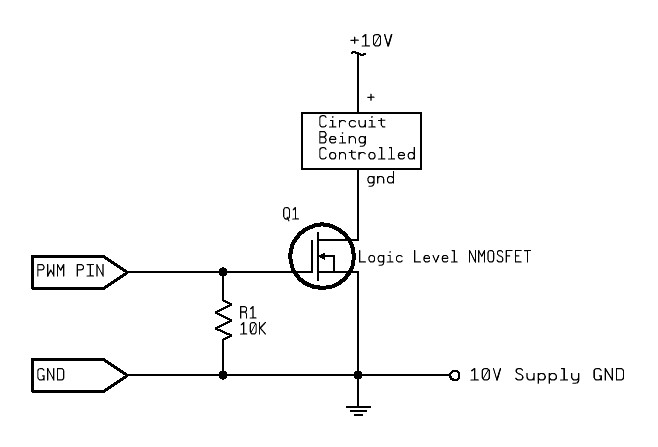

Lambda: 'return id(sensor_temp).state < 29.0 'Įvening, So I have manage to finally work this out with a friend. Lambda: 'return id(sensor_temp).state < 27.0 ' anyone able to point me in the right direction please fan: The pin PWM 1 to PWM 6 can be used as pulse width modulator outputs which.

So it’s kind of helped but I cant have multiple options, so I come up with this but it still doesn’t work. As far as driving the gate of the MOSFET using Arduino is concerned, a current amplifier circuit should be used. The FET board sits on the expansion pins mounted on the Arduino board and is. Thank sfor your help so far, i’m not a coder either but I will have a go.

# These are for the manual buttons and to trigger the switches # Enable fallback hotspot (captive portal) in case wifi connection fails If you use the default values, these are your PWM frequencies Arduino Pins D9, D10, D11, and D3 500Hz, and Arduino pins D5 and D6 1kHz. I can nicely control the output voltage to the heater. Hi there, I am trying to build a heater which is controller by an arduino nano Atmega328. The 8-bit PWM value that you set when you call the analogWrite function. Heater, MOSFET and PWM Solved Using Arduino Motors, Mechanics, Power and CNC. What I want to archive is using esphome is turn the fan on at different speeds (High, Medium or Low) depending on the temperature on the DHT22 On a side note, pins 3,5,6, 9, 10,11 of Arduino Uno can be configured for PWM output.
ARDUINO PWM FET HOW TO
This tutorial explains simple PWM techniques, as well as how to use the PWM registers directly for more control over the duty cycle and frequency. Is anyone able to help me out, I’m trying to control a 12v DC fan using a Mosfet Driver ( ) Connected to a ESP8266, with a DHT211 connected to the same esp8266 controller. Pulse-width modulation (PWM) can be implemented on the Arduino in several ways.


 0 kommentar(er)
0 kommentar(er)
